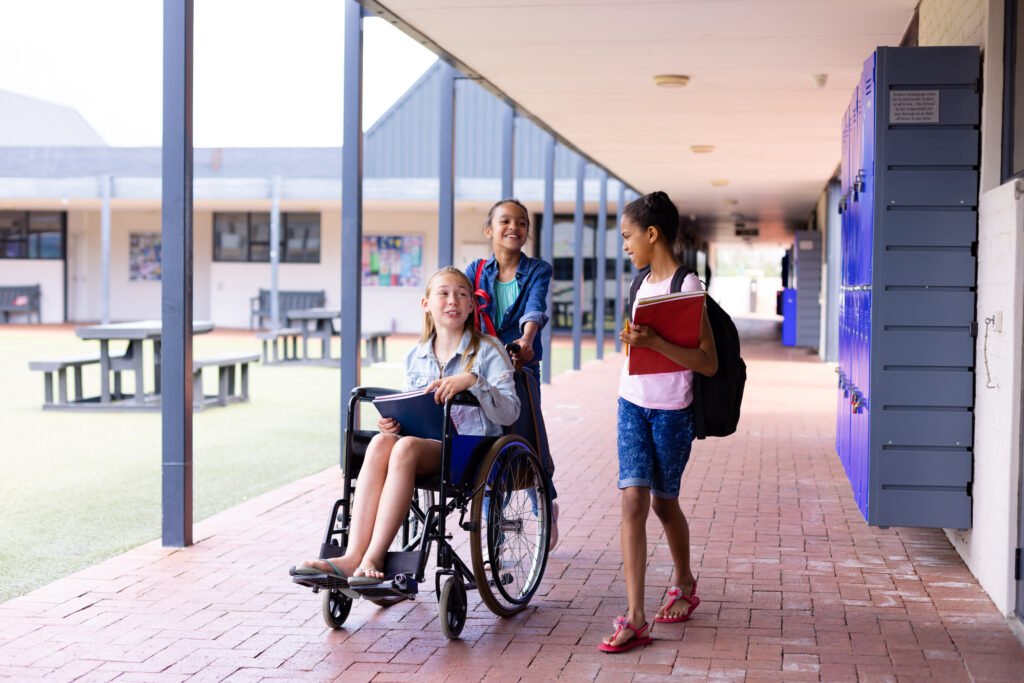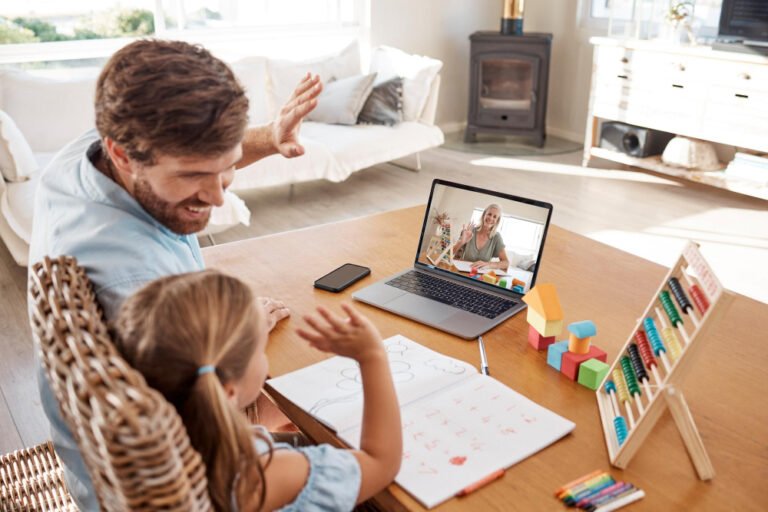Ensuring ADA compliance at school is more than a legal obligation—it’s a promise of inclusion, dignity, and safety for every child. When you drop your child off, you trust they’ll be supported in every way. But what if their school isn’t fully accessible?
In this article, you’ll learn how to spot signs of non-compliance and what you can do to help your child—and every child—learn in a safer, more inclusive environment.
As a parent, you might not think to ask whether your child’s campus meets all ADA compliance at school standards—but you should. From wheelchair access to visual alarms, small oversights can create major barriers for children who need support to thrive.
What ADA Compliance at School Looks Like
ADA compliance ensures that every child, teacher, or visitor—regardless of physical ability—can safely access and move through school buildings.
It’s more than a legal issue. It’s about equal opportunity.
For parents, understanding ADA basics means being able to advocate for safe and inclusive learning conditions.
1. Accessible Entrances and Pathways
- Are there ramps at entrances?
All school entrances should have ramps with gentle slopes and side railings for wheelchair users and those with mobility difficulties. - Are doors wide enough?
A standard ADA-compliant door must be at least 32 inches wide for safe passage. - Are hallways clutter-free and wide?
Turning space must be at least 60 inches wide, allowing safe movement for wheelchairs or walkers.
💡 Tip: When visiting your child’s school, notice how easy it is for someone using a wheelchair to enter and move around.
2. Signs of ADA Compliance Every School Should Show
- Are room signs written in braille and tactile letters?
ADA requires raised lettering and braille between 48–60 inches high. - Do signs have good contrast?
White-on-blue or black-on-white is preferred for visual clarity. - Are directional signs frequent?
Schools should have wayfinding signs in hallways, every 75 feet, for easy navigation.
If your child or another student is visually impaired, these signs can mean the difference between independence and frustration.
3. ADA-Compliant Restroom Features
Restrooms are one of the most commonly overlooked areas of non-compliance.
Here’s what to check:
- Accessible stalls should be 60×60 inches with grab bars at 33–36 inches.
- Sinks and hand dryers should be no higher than 34 inches from the ground.
- Turning space should be free of trash bins and supplies.
🧼 Every child deserves the dignity of being able to use the bathroom safely and independently.
💡 Also check out: Is Your Child’s School Really Clean? Here’s Why It Matters
4. Inclusive Classroom Design
Does your child’s school offer adjustable desks for wheelchair users? Are common areas clutter-free and safely navigable?
Classroom features that should meet ADA standards:
- One adjustable desk per room
- Low-pile carpets and smooth flooring transitions
- Accessible A/V equipment (like remote controls for projectors or speakers)
These elements support inclusion not just for physical disabilities, but for neurodivergent students who benefit from smooth, organized learning spaces.
5. Emergency Preparedness for All Students
Many schools fail to consider how a student with hearing loss, sensory sensitivity, or mobility limitations would evacuate during a drill.
A compliant school should have:
- Visual strobe alarms along with standard audio signals
- Clearly marked evacuation routes
- Designated “refuge areas” on upper floors with phone access and instructions
🧠 Inclusion isn’t just for classrooms. Safety must extend to every scenario.
What Can You Do as a Parent?
You don’t need to be a facility expert to make a difference. Here are 3 ways to take action:
- Start the Conversation: Ask the school principal or PTA about their ADA checklist.
- Observe During Visits: Take mental notes during events like back-to-school nights.
- Join a Parent Committee: Advocate for infrastructure improvements.
You’ll be surprised at how many schools respond positively when parents get involved—especially when concerns are framed around student safety and equity.
Recommended Accessibility Essentials for Families
Looking for practical ways to support your child—or someone you love—with physical disabilities in everyday school life?
Here are three smart Amazon finds that make a real difference:
- Folding Portable Ramp for Wheelchairs & Scooters
Lightweight and durable, this ramp helps children and teens navigate doorways and curbs safely—ideal for school entrances or weekend outings. - Universal Grip Aids – Assistive Hand Device
These easy-to-wear aids improve grip strength for writing, holding utensils, or using art tools in the classroom—supporting both independence and dignity. - Adjustable Cup Holder for Wheelchairs & Walkers
A small yet powerful accessory that adds comfort and practicality to any wheelchair, helping your child stay hydrated while on the move.
💡 These tools don’t just provide comfort—they build confidence, inclusion, and independence.
Need Help Making Your School ADA Compliant?
If you’re a school leader or parent group seeking expert help to assess your school’s accessibility, we’d love to hear from you.
📧 connect@jessicanevespereira.com
Let’s build safer, smarter, more inclusive schools—together.







One Response